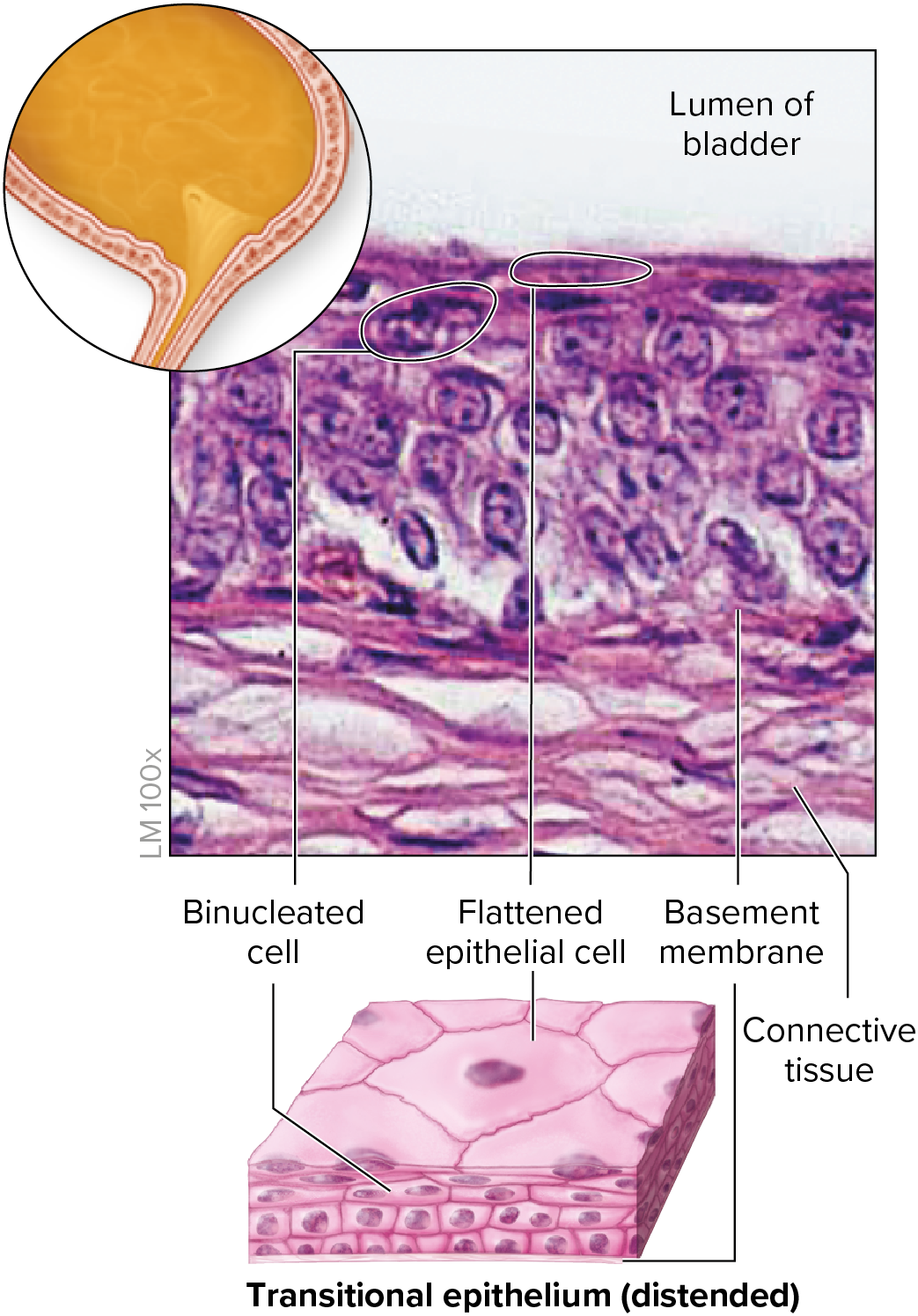Stratified epithelium cells (copy)
1/8
There's no tags or description
Looks like no tags are added yet.
Name | Mastery | Learn | Test | Matching | Spaced |
|---|
No study sessions yet.
9 Terms
Stratified Squamous Epithelium
Basal layers with cuboidal shape
Apical cells with squamous shape
Protects against abrasion and friction
Stem cells in basal layer continuously divide
• Replace lost cells at surface
Exists in keratinized and nonkeratinized forms
Keratinized Stratified Squamous Epithelium -
Superficial layers of dead cells
– Cells lack nuclei, filled with keratin
– Cells in basal region migrate toward apical surface
– Fill with keratin and die
– Found in epidermis
Nonkeratinized Stratified Squamous Epithelium
All cells alive
Kept moist with secretions (for example, saliva, mucus)
Lack keratin, protective protein
Microscopically visible cell nuclei
Lines:
• Oral cavity, part of pharynx, esophagus, vagina, anus
Keratinized Stratified Squamous Epithelium - Function
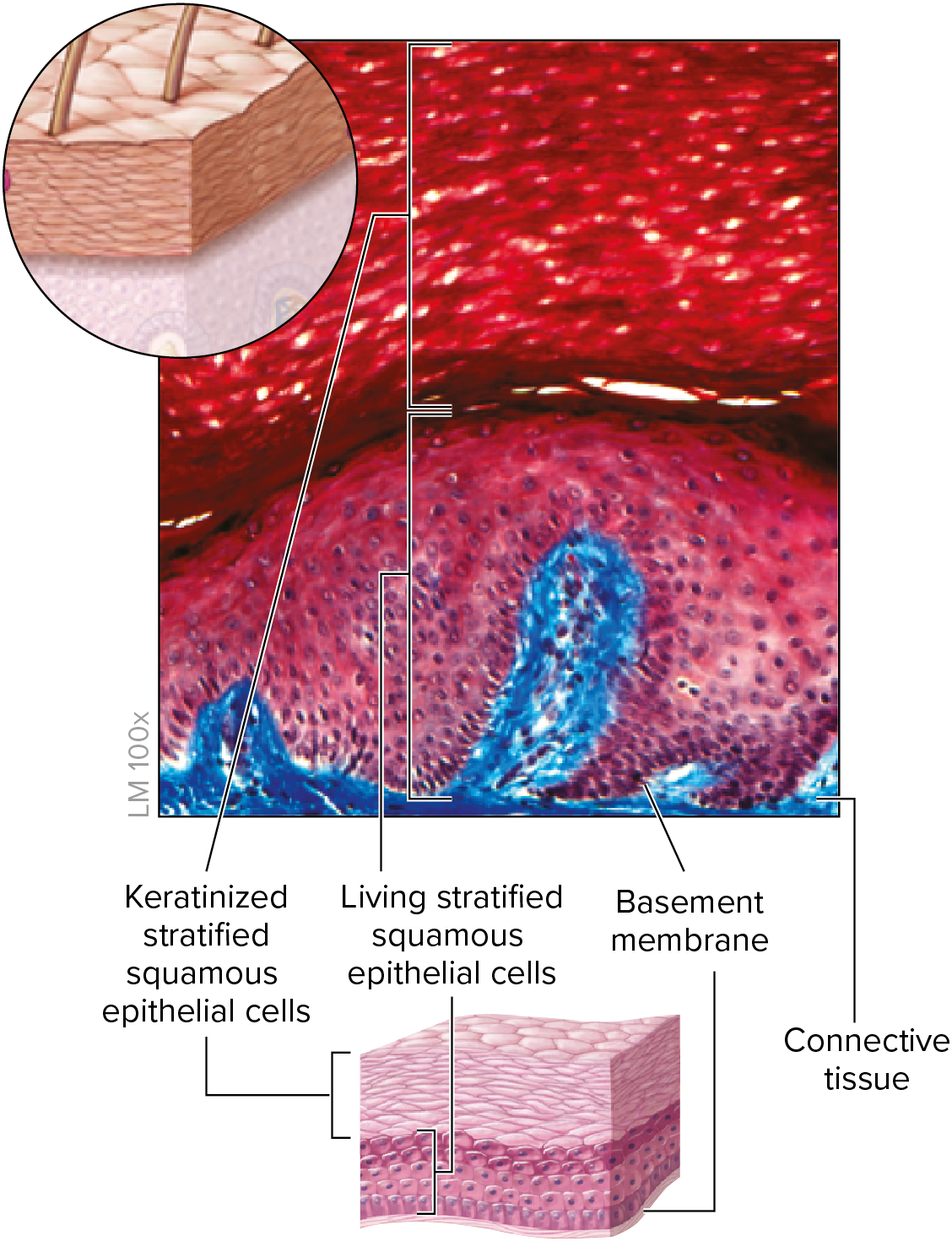
Nonkeratinized Stratified Squamous Epithelium - Function
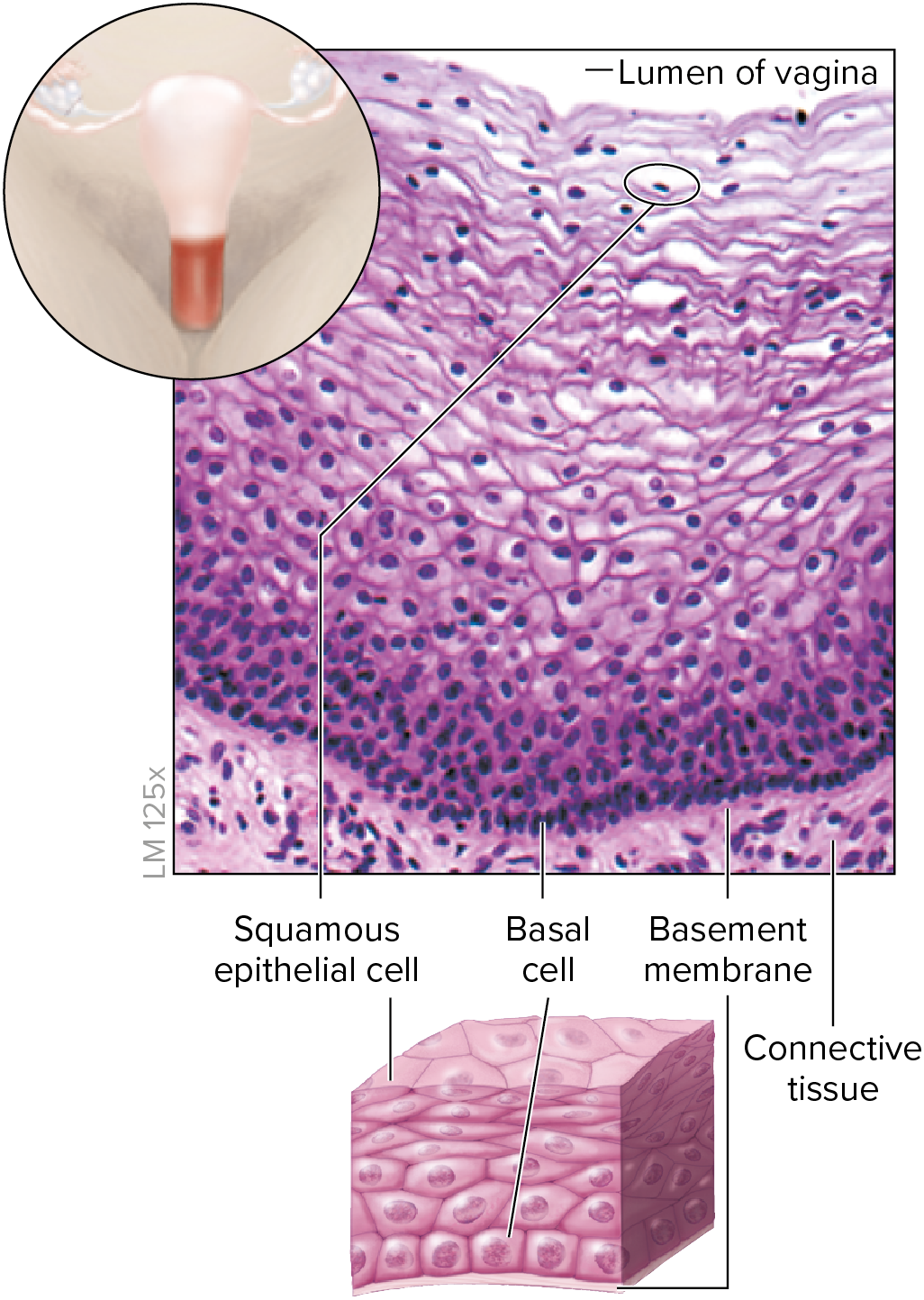
Stratified Cuboidal Epithelium - Structure
Superficial cells cuboidal in shape
Forms tubes and coverings
Protection and secretion
Forms walls of ducts in most exocrine glands
• Sweat glands, parts of male urethra, periphery of ovarian follicles
Stratified Cuboidal Epithelium
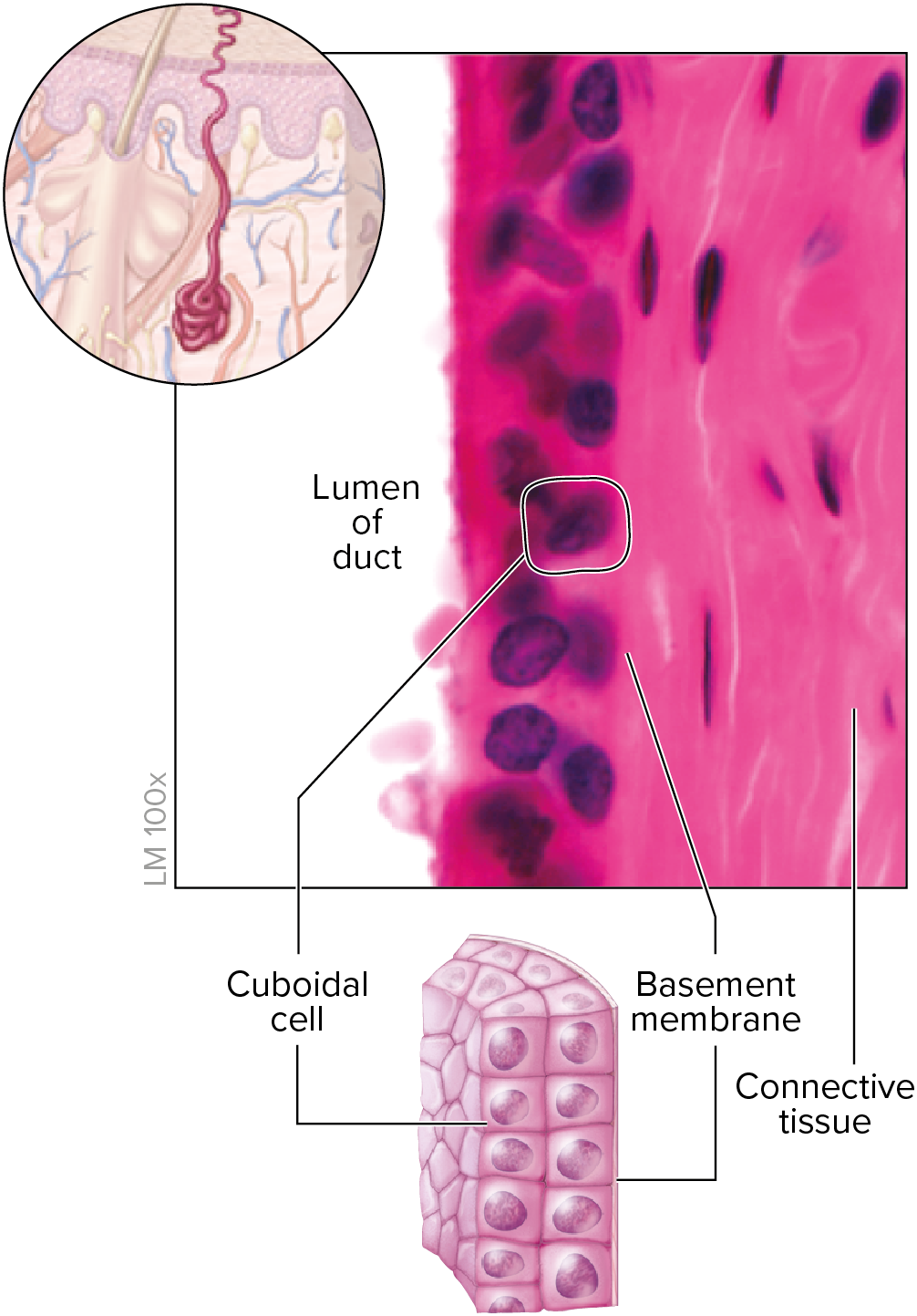
Transitional Epithelium
Limited to urinary tract
In relaxed state
• Basal cells cuboidal; apical cells large and rounded
In stretched state
• Apical cells flattened
Binucleated cells (two nuclei)
Allows for stretching as bladder fills
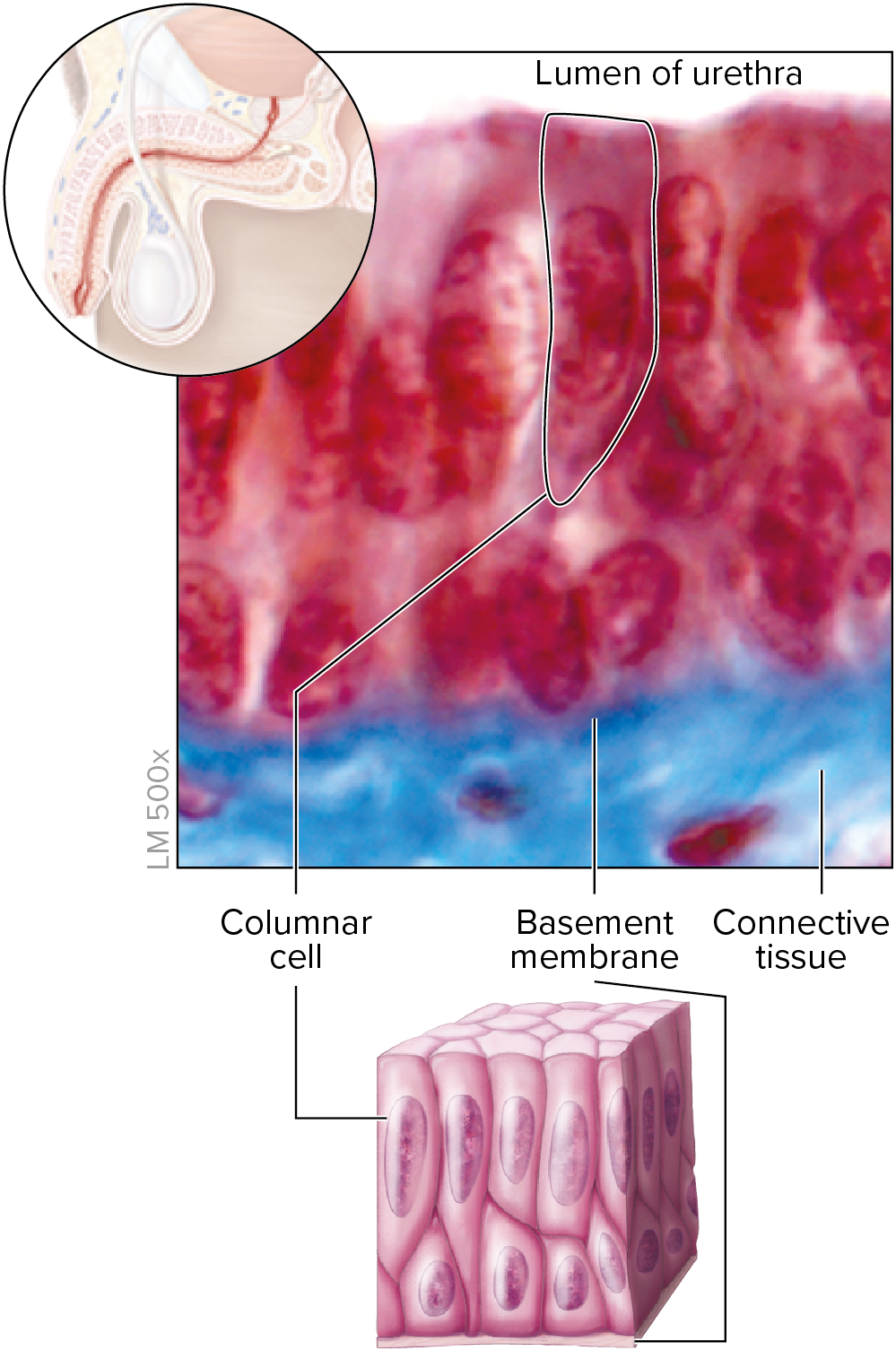
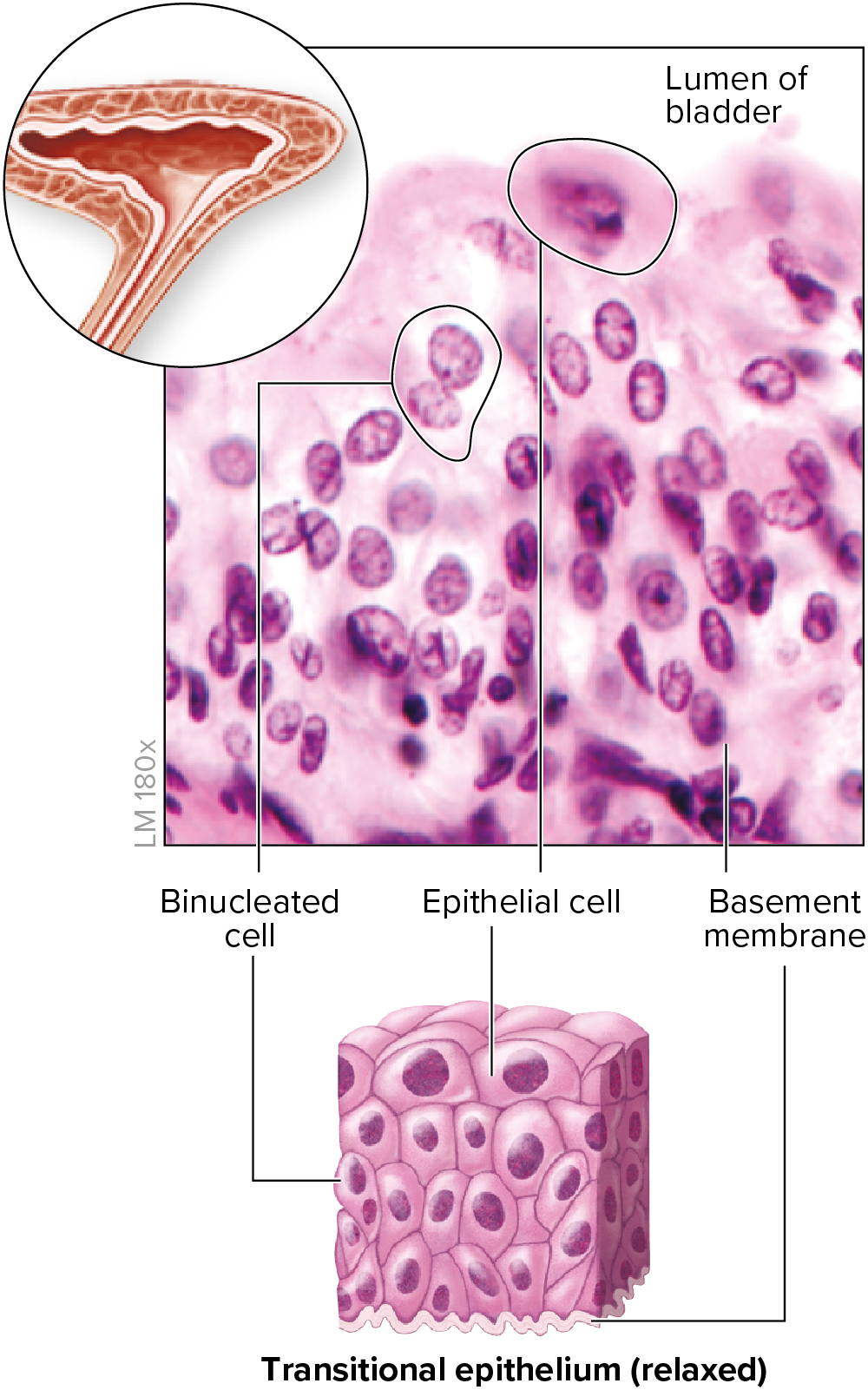
Transitional Epithelium - relaxed
Transitional Epithelium - distended
